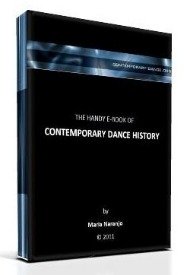Pioneers of Modern Dance for Men
by Georgina Gregory
(Preston Lancashire UK)
I am currently researching the relationship between popular music and dance and want to discover the roots of more masculine dance styles for men. So far I keep seeing references to Ted Shawn and his Men Dancers but are there other choreographers and theorists who have devoted their time to developing a specifically masculine style of dance? I am also trying to establish how and where street styles began to overlap with modern and contemporary dance. I would appreciate your answers.
Comments for Pioneers of Modern Dance for Men
|
||
|
||
|
||
The handy e-book of CONTEMPORARY DANCE HISTORY:
The Dance Thinker is our occasional E-zine. Fill in the form below to receive it for free and join us.
Read:
"The Dance Thinker"
BACK ISSUES
Post contemporary dance announcements (workshops, auditions, performances, meetings and important news... it is free.)



